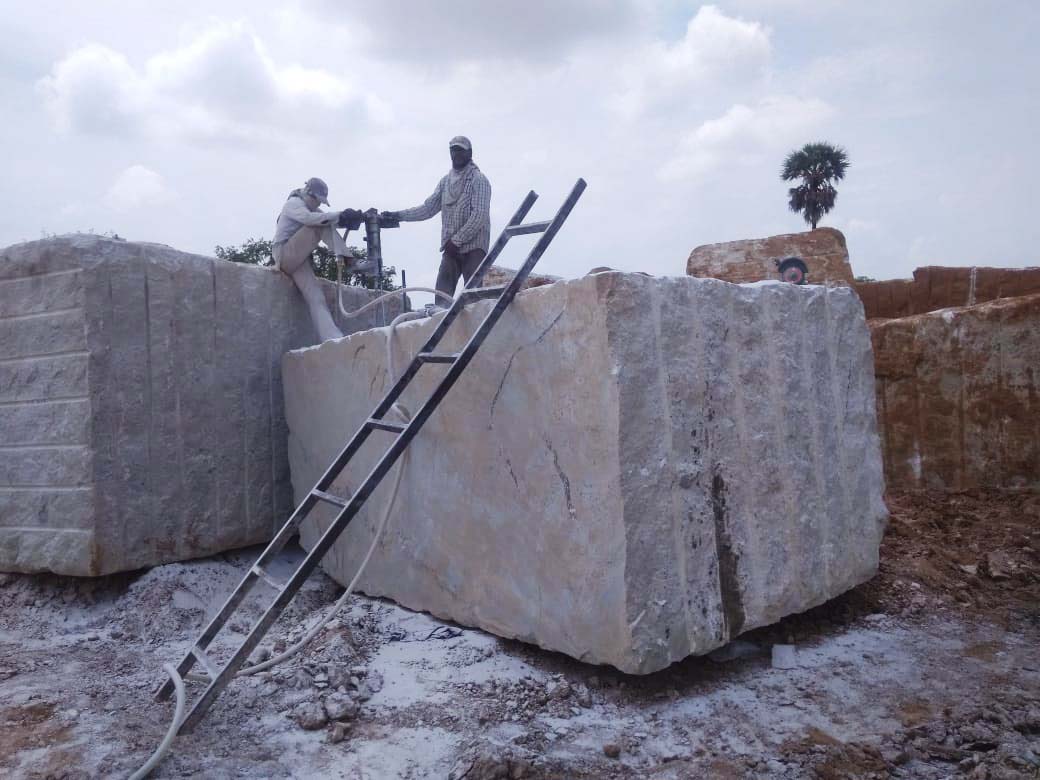Diving into of Granite Quarries in South Africa
Diving into of Granite Quarries in South Africa
Blog Article
Revealing the Mysteries of Granite Quarrying: Where Stamina and Sophistication Meet
The world of granite quarrying is a world where the raw toughness of nature converges with human artistry to produce frameworks that stand the test of time with an air of elegance. From the depths of quarries to the careful sprucing up in workshops, the process of transforming granite into building wonders is an intricate dancing of practice and development. As we peer right into the depths of this ancient craft, we begin to uncover the surprise intricacies that shape the really significance of our built atmosphere.
The Beginnings of Granite Quarrying
In the annals of architectural history, the origins of granite quarrying are shrouded in a tapestry of ancient craftsmanship and geological marvels. Going back to old Egypt and Mesopotamia, the extraction of granite from quarries noted the beginning of a trip that would eventually cause the creation of some of the world's most famous frameworks.
Granite quarrying's origins can be mapped to the competent artisans that recognized the stone's longevity and aesthetic appeal. Through a mix of primitive tools and large determination, these very early quarry workers discovered granite blocks that would end up being the foundation of civilizations.
As civilizations developed, so did the techniques of quarrying granite. The Romans, renowned for their engineering prowess, created sophisticated methods for removing granite to construct monuments, holy places, and roads that stood the examination of time.
The legacy of these ancient quarrying methods proceeds to form modern-day design, with granite remaining an icon of stamina and beauty in building jobs around the world. (granite quarries in south africa)
Tools of the Quarrying Trade
The evolution of granite quarrying techniques from ancient people to contemporary times highlights the critical duty played by the devices of the quarrying profession in shaping the sector's practices. In old times, quarrying tools were basic, typically containing chisels, hammers, and wedges made from materials like bronze or iron. These tools required significant workforce and time to remove granite obstructs from quarries.

In addition, the introduction of pneumatically-driven tools and high-powered equipment has actually dramatically minimized the physical labor required in quarrying operations, improving employee security and productivity. As the quarrying market continues to introduce, the devices of the trade continue to be at the leading edge of driving progress and forming the future of granite extraction.
Drawing Out Blocks of Granite
Making use of precision machinery and progressed techniques, the extraction of granite obstructs from quarries has come to be an advanced process in her explanation the modern-day quarrying industry. The first step includes recognizing the area and dimension of the granite down payment to identify one of additional resources the most effective removal approach. Once an ideal website is picked, the removal process starts with the exploration of openings for the placement of dynamites. Controlled blowing up strategies are then utilized to disintegrate the granite right into convenient sections.

Polishing and Ending Up Methods
To attain a remarkable surface on granite blocks, experienced craftsmens use a series of thorough polishing and ending up methods. After the initial extraction and shaping processes, the granite obstructs go through a detailed sprucing up stage to improve their natural appeal and durability. One common approach utilized in brightening granite is ruby abrasion, where industrial rubies are used to grind and polish the stone to a smooth finish. This process not only produces a lustrous surface yet also makes certain harmony in color and structure across the granite block.
In enhancement to sprucing up, completing techniques are related to additional improve the granite's look. These strategies may consist of flaming, sharpening, or cleaning, each offering special appearances and coatings to fit different visual preferences. Flaming, as an example, entails revealing the granite surface area to high temperatures to create a rough, textured finish, perfect for exterior check here applications where slip-resistance is crucial. Sharpening, on the various other hand, offers a matte finish that is smooth to the touch, excellent for interior countertops and floor covering. By meticulously picking and using these brightening and ending up techniques, craftsmens can transform raw granite obstructs into elegant pieces that display both toughness and beauty.

Environmental Influence and Sustainability
With the growing focus on environmental awareness in the industry, granite quarrying methods are increasingly looked at for their influence on natural resources and long-term sustainability. Quarrying for granite can have considerable ecological effects. The extraction process frequently involves the use of heavy equipment, explosives, and big amounts of water, leading to habitat devastation, soil disintegration, and water contamination. In addition, the transport of granite from quarries to refining facilities produces carbon discharges, additionally adding to environmental deterioration. granite quarries in south africa.
To alleviate these influences and make sure sustainability in granite quarrying, sector stakeholders are embracing various actions. Applying sophisticated innovations to reduce power usage and water use, redeeming quarried land for environmental remediation, and promoting accountable sourcing practices are some strategies being utilized. Additionally, certifications such as the Woodland Stewardship Council (FSC) and the Management in Energy and Environmental Style (LEED) assistance consumers recognize ecologically pleasant granite items.
Final Thought
To conclude, granite quarrying is a process that needs specialized tools and strategies to remove blocks of granite and brighten them to a high level of coating. While the ecological effect of quarrying can be considerable, efforts are being made to boost sustainability methods in the industry. On the whole, granite quarrying is a fragile balance between utilizing the stamina and beauty of this natural rock while decreasing its impact on the atmosphere.
Report this page